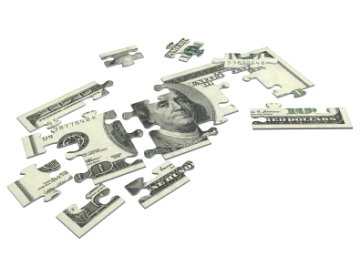Investment Strategies To Beat Inflation
 In a previous post I discussed some ways you can beat inflation through changes in your workload and expenses.
In a previous post I discussed some ways you can beat inflation through changes in your workload and expenses.
At some point, however, you’ll have to make some changes in your investment portfolio.
Real Returns
Instead of working harder or longer, you can generate inflation-beating returns (known as real returns) from your investments. The goal is to preserve an investment portfolio’s purchasing power so that future liabilities, which increase at the rate of inflation, can be adequately met by an equal or greater increase in assets.
Due to the compounding effects of inflation, there is a greater erosion of purchasing power over time. Assuming a 3% inflation rate, your purchasing power declines by over half in 25 years, which is well within an individual’s investment timeframe. With just a slight increase to 4%, it declines by nearly two-thirds. In other words, it would take twice as many dollars in 25 years to purchase the same goods and services as it would today assuming average inflation, and almost three times as many dollars assuming inflation rate is 4%.
Stocks
Stocks historically have provided long-term returns in excess of inflation of about 6%, albeit with high variability. To beat inflation with stocks, make sure you invest in them for a minimum of 10 years since in the short term, stocks have had negative real returns with unanticipated high inflation the majority of the time. For most of the 1970s, and again most recently from 2000 to 2002 and 2008, the real rate of return on U.S. stocks as measured by the Dow Jones Industrial Average was negative, indicating a loss of purchasing power.
On the other hand, in the long-run real-estate stocks beat inflation, as shown by the fact that the Consumer Price Index (CPI) more than doubled from 1980 to 2006, while real estate stocks increased over five fold.
Bonds
Bonds fare worse than stocks with inflation, but still have achieved a long-term real return of about 2%. The interest payments from a bond include the risk assumed for anticipated inflation. With unanticipated high inflation, prices of bonds decline even more than stocks. In fact, for a period of four decades from 1940s to 1970s, the real return on U.S. Treasury bonds was negative. To mitigate the effects of inflation, make sure you buy short-term bonds with maturities less than five years.
Two types of government-issued bonds guarantee inflation protection, I bonds and Treasury Inflation Protected Securities (TIPS). The I bond is a savings bond which pays a fixed interest rate and on top of that adds an inflation rate based upon the CPI, so that it nearly guarantees a return that beats inflation. TIPS are government bonds whose face value periodically increases at the inflation rate. Interest payments also increase based upon the inflation adjusted face value to guarantee a positive real return.
Gold
Gold historically has been seen as a safe haven in times of inflation. As a commodity it is expected to have a return of zero after inflation. One study determined that from 1895 to 1999, the price of gold matched inflation but did not beat it. Over the past two decades, though, gold has lost its glitter. In 1980, gold was selling for more than $800 per ounce, the same price it was trading at almost 25 years later. Even after gold’s recent run-up in price, to match inflation over that time frame, gold today should be selling for more than $2,000 an ounce! By comparison, an investment in U.S. stocks from 1980 to today would have grown over 10 fold.
While there is no perfect inflation hedge, the key is mixing a variety of investments together in order to produce long-term positive real returns, since each responds to inflation differently. Physician pay has not kept up with inflation, resulting in a decline in our purchasing power. Strategies to offset personal inflation include boosting gross income by increasing workload, reducing expenses, or investing in inflation-beating investments. Each strategy has its own unique advantages and disadvantages.





 Post a Comment
Post a Comment
Reader Comments